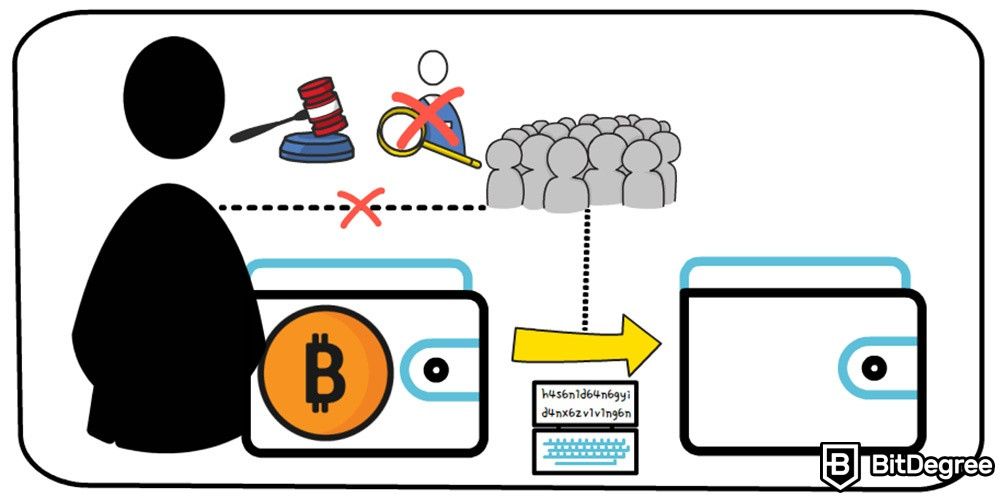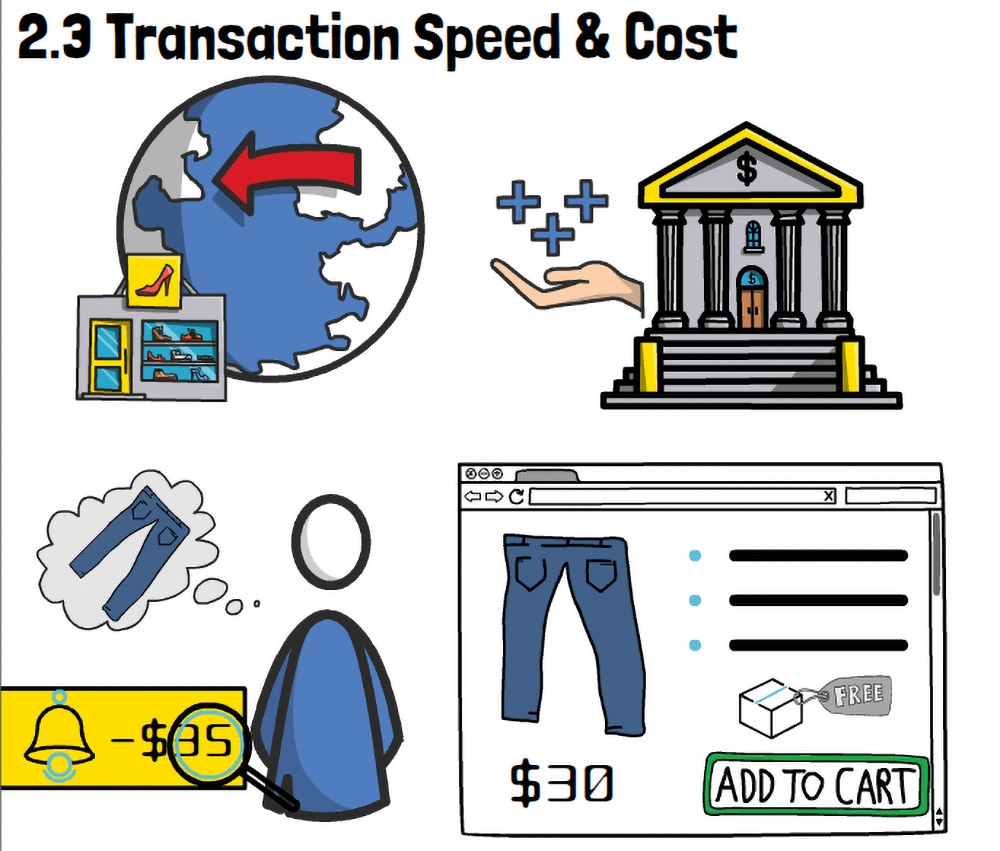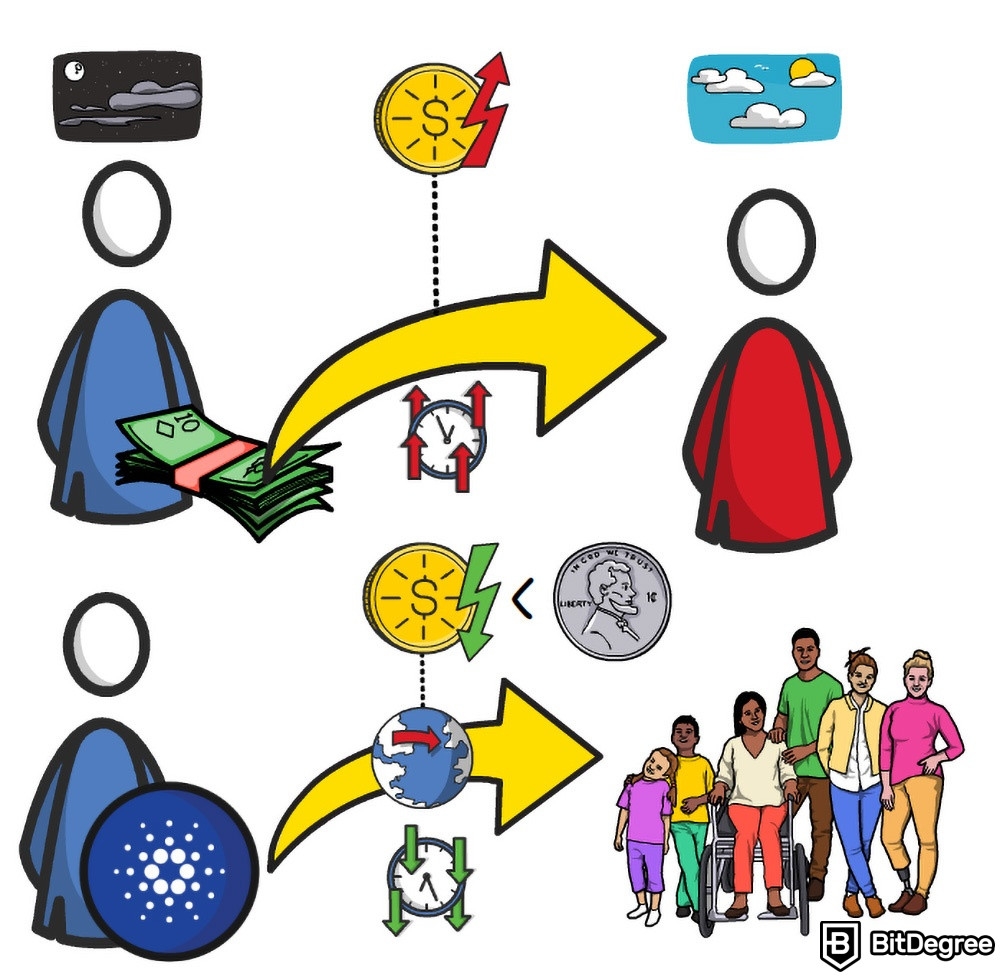What is a Cryptocurrency?
In this section, I’m going to tell you what is a cryptocurrency!
The world of cryptocurrencies and blockchain technology, as a whole, is full of complicated concepts and ideas. To top that off, there seem to be new concepts being introduced to the general public, every other day or so! This can, for a fact, make it difficult for newbies to enter the industry.
Even the most difficult concepts can become approachable and understandable, if you have your fundamentals straight, though! And that is exactly what I’m here to help you with - by explaining crypto topics in a fun and beginner-friendly manner! In crypto, all fundamentals start out with figuring out what is a cryptocurrency.
In this section, we’re going to talk about cryptocurrencies. I’ll tell you what they are, what’s the purposes behind them, and we’ll also talk about how they are different from traditional, global currencies.
Without further ado, let’s get to it!

Video Explainer
Video Explainer: What is a Cryptocurrency?
Reading is not your thing? Watch the "What is a Cryptocurrency?" video explainer
What is a Cryptocurrency: For Beginners (Animated Explainer)


What is a Cryptocurrency?
So, how can the concept of cryptocurrencies be explained in a beginner-friendly way?
The simplest possible answer to that question is that cryptocurrencies are digital money that’s based on blockchain technology. For the sake of keeping this section on topic, I won’t get into the details of what blockchains are - there's a whole separate section about that in our Crypto 101 Handbook.

The term “crypto” is a shortened version of “cryptography”. If you’d like to learn what is cryptography, it’s honestly also a huge topic, in of its own - to put it short, though, it’s a form of solving and cracking difficult codes. So, the term “cryptocurrency” could be viewed as “digital, coded money”, in a very specific sense!
At the time of writing this cryptocurrency explanation, there are currently around 20,000 different crypto assets out there, on the market. Not all of them are successful, though - it is estimated that around 1/5th of all cryptocurrencies have failed. That’s a huge number!
Since examples are what I do best, allow me to give you one, in order to explain cryptocurrency, and to illustrate how crypto money is different from fiat money - in other words, our traditional, global currencies that we use, every single day (USD, EUR, and so on).

Imagine that you and your friend both decided to shop for concert tickets, online. A globally-huge pop star is coming to your city, and so, the tickets are hot - everyone’s trying to get their hands on them!
Both you and your friend keep refreshing the ticket vendor’s webpage, waiting for those tickets to become available to be purchased. As soon as they go live, both of you rush to enter your details, too - every moment counts, after all!
In just a few minutes, your friend already has their tickets in the email, while you’re still struggling to enter your credit card details on the page. Once you’ve finally managed to do so, you are faced with an error - the bank is undergoing maintenance, and credit card payments won’t be completed until that’s done, sometime tomorrow.
The end result? Your friend will go to the concert, while you’re going to have to find a different event… And wait for your credit card to start working again!
Now, then - why was your friend able to complete their purchase? Whelp, you’ve guessed it - they were paying in crypto.
Cryptocurrencies VS Traditional Money
Now, keeping that example in mind, I want to continue this “what is cryptocurrency for dummies” explanation by exploring some of the main differences between cryptocurrencies and traditional money & payment systems. This will hopefully help you get a better understanding of why crypto has become as popular as it is - well, at least part of the reason.
The key differences between crypto and fiat money lie in governance, privacy, transparency, transaction speeds, and transaction costs.
Governance
First things first - governance. This is something that is really at the core of crypto technology, and is one of the main reasons why cryptocurrencies came to be, in general! Ever since the creation of Bitcoin in 2009, cryptocurrencies have always prided themselves on being decentralized (with a few exceptions).

Decentralization essentially means that there is no single, central governing authority behind the cryptocurrency. With traditional money, you have governments and central banks watching over their currencies - for example, in the United States, the FED (or, the Federal Reserve System) is responsible for managing things such as inflation, and how much new money flows into the economy, every year.
With crypto, there’s no FED, and no other single governing party that would influence how a particular cryptocurrency will act. Instead, this is something that is decided by the market, itself - in other words, the holders of the cryptocurrency are responsible for what happens with it.
So, here’s another example. Think about the aforementioned Bitcoin, the biggest and most well-known cryptocurrency on the market. Every single aspect surrounding this crypto asset is decided by the community behind it. While the anonymous individual or a group of people (known as Satoshi Nakamoto) had created Bitcoin, after that was done, the rest was left with the community behind the asset. In other words, if you wanted to make some changes to Bitcoin, you would need to get the larger part of the community behind it!
Privacy and Transparency
This leads us to the next two points that I want to emphasize - privacy and transparency.

With traditional currencies, both of those things are pretty limited. Sure, you can go to the shop, and buy some bread with cash - no one will really know that it’s YOU who bought that bread, since there’s no credit card statement, and the transaction happened in cash.
That being said, that cash that you paid DID come from somewhere, didn’t it? Perhaps you’ve just withdrawn it from the ATM machine on the other side of the road? Or maybe you’ve borrowed it from a friend, or a colleague?
My point here is simple - no matter where you get your money from, it’s always tracked and logged by the government. If you DO manage to receive money from somewhere that the government doesn’t see, you are obligated to inform the relevant tax authorities in your country, in the form of a tax return filing, at the end of the year, or at any other designated point in time.
A quick sidenote - if, at the time you're reading this, tax season is around the corner, make sure to check out our dedicated section on how to avoid or minimize crypto taxes - legally, of course!
Now, as you figure out what are cryptocurrencies, you’ll notice that things are a bit different with this form of payment. The more you look into it, the more intricate and complicated it will appear to be - for that reason, we’re not going to look into the various exceptions, but let’s instead talk about the broader rules of the cryptocurrency industry.
So, with crypto, all of the transactions that you perform are going to be public. If it’s something that you weren’t aware of, it can sound scary. Do not fret, though - while your transaction WILL be public, no one will know that it’s YOU who is performing them. Each transaction is encrypted, and unless you go out and tell the whole world your personal cryptocurrency wallet address, no one will know.

This is exactly how cryptocurrencies allow you to retain your privacy, while also being transparent assets themselves, too! Since you can trade cryptocurrencies anonymously, you don’t need to worry about someone snooping around your transactions - on top of that, since all of those transactions are public, transparency is easy to prove, as well!
Now, look - I do have to mention that you WILL probably need to report your transactions, and any potential income, to the relevant tax authorities in your country or region. Of course, each situation is different, and depends on crypto regulations in your area, but that’s just something that should be kept in mind!
Transaction Speed & Cost
The last big area where cryptocurrencies are quite different from traditional currencies has to do with the speed and cost of your transactions. Once again, allow me to illustrate this with an example.

Imagine that you want to purchase a new pair of pants. You go online, and find an eShop that sells exactly what you’re looking for. The pants cost $30 - that’s a bargain, you say! Even the shipping is free, too!
That being said, as you make the purchase, you see that you were actually charged $35, instead of $30. Looking into it, you eventually learn that the shop is located on the other side of the world, and since that region falls into some sort of a different economic zone, there are extra charges from your bank, in order to perform that transaction.
Naturally, in reality, things are quite a bit more complicated than that, - still, though, the example illustrates my point, nonetheless!
Transactions that involve traditional currencies - or traditional payment gateways, for that matter - can get quite costly. It all depends on a variety of factors, but, once again - the point remains the same, either way!
On top of that, such transactions can also take a lot of time to be processed, as well. While we’re used to credit or debit card payments being processed almost immediately, oftentimes, the same cannot be said about wire and bank transfers, in general. If you perform a bank transfer at night, your transaction might not be processed until the next day! And this is only if you’re sending money to someone in the same region that you’re located in, too!

Understanding what are cryptocurrencies, things are very different, in both regards. When it comes to transaction costs, depending on the cryptocurrency that you might be transacting with, the fees could be as low as a fraction of a penny! Imagine sending a few thousand dollars to your family, on the other side of the world, and not even paying a cent for that transaction.
Could it get any better? Yes, it can - if that transaction was processed and completed in a matter of seconds. Once again, this is completely possible with cryptocurrency technology!
To wrap everything up, let me just say this - apart from everything I just talked about, there are multiple other benefits associated with cryptocurrencies, and the blockchain technology behind them!










